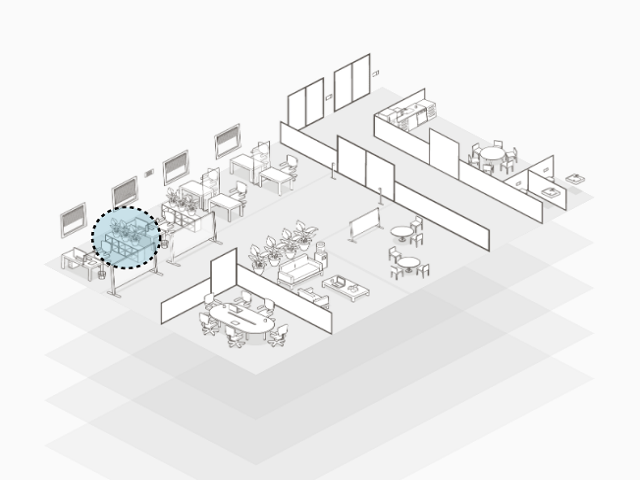Using Technology to Make Offices COVID-Secure
27 August 2020

Just how do you make an office COVID-19 secure and provide a safe working environment for employees, visitors, students and staff? This question is faced by many preparing to welcome people back to offices who have been remote working from home and students back into education.
There are several steps that can be taken to provide a COVID-safe and secure building. The more visible these are, the more confidence they will give those inside that they are in a safer environment. We are not talking face masks here but more how technology and in particular how a convergence of technologies can be used to underpin advice from the WHO on social distancing, use of hand sanitiser and screening.
The security industry has always been segmented into a range of application technologies. The two most commonly separated out are access control and CCTV camera systems. Some companies like Remsdaq, have integrated camera systems such as Hikvision into their access control platforms. EntroWatch being a prime example. The convergence of the technologies was initially intended to allow CCTV images to be tagged to door events. If there was a door alarm, the CCTV camera feed for that area could be viewed pre and post event.
The Coronavirus pandemic has led to most camera and CCTV system manufacturers adapting and extending their product lines. Many have turned their more advanced facial recognition, thermal and image screening technologies towards the front-line battle against COVID-19. Cameras can be now be installed for monitoring and/or screening and run as standalone or integrated solutions. Examples of screening functions include temperature measurement (forehead or wrist) and mask wearing. Both ideal indicators as to whether it is safer to allow a person into a building or grant access through a doorway.
Screening camera technologies can also be built into other solutions that can be used to control the spread of the virus. Most buildings now provide hand sanitiser dispensers. These tend to be wall-mounted and manually operated. More advanced systems can be free-standing pedestals, with ‘contactless’ sanitiser dispensing coupled with a thermal screening camera. The camera and a data captured can then be stored in a database for monitoring purposes.
Going ‘contactless’ is also a great way to prevent the spread of the virus. Outside of work most people have already ditched cash and are using mobile wallets and contactless cards. Inside buildings, facial recognition provides a ‘contactless’ way to open a door. Contactless antimicrobial readers and request-to-exist buttons are others that will help to keep commonly used surfaces cleaner and lower the chance of virus spreading.
Wherever you travel today you generally see queues of people and route guidance in place. These are measures to manage occupancy and ensure a controlled flow of people into and throughout a building. Most commonly seen in retail outlets, there is no reason why similar approaches cannot be adopted within other buildings such as offices, industrial and manufacturing sites, schools, colleges and universities.
Technology can again be used to automate occupancy management. Access control systems like EntroWatch are built around the principles of Who, Where and When. Knowing which credential holder is where, combined with room and area occupancy limits, provides a way to automatically control more public areas within buildings such as canteens and rest areas. Occupancy management can also help to reduce the need for face mask wearing, unless the UK government makes this mandatory in work spaces in addition to retail and other areas. Another benefit of the technologies now available is that they can be retrofitted to existing buildings. The antimicrobial EntroPad is also access control agnostic and can be used with any Weigand compatible access control solution.
So, what about the future? Building management technologies will continue to develop and provide tools to combat the Coronavirus. In addition to facial recognition-based systems, voice activation is another technology whose use may increase. For example, to summon a lift and say which floor is required rather than having to touch commonly used buttons.
Mobile phone application usage will also increase to the point where a person could receive alerts on an App to let them know whether it is safe to go into their building or specific areas. This could be in the form of a traffic light or density graphic and provide information on occupancy management, Covid-status, air quality and other smart building related information.
There is little doubt that the battle against COVID-19, as with any war, is driving innovation and creativity in terms of medical advancements and treatments. At Remsdaq we are also playing our part in terms of building management, evolving our systems to support the world that exists today and solve the challenges of tomorrow.
